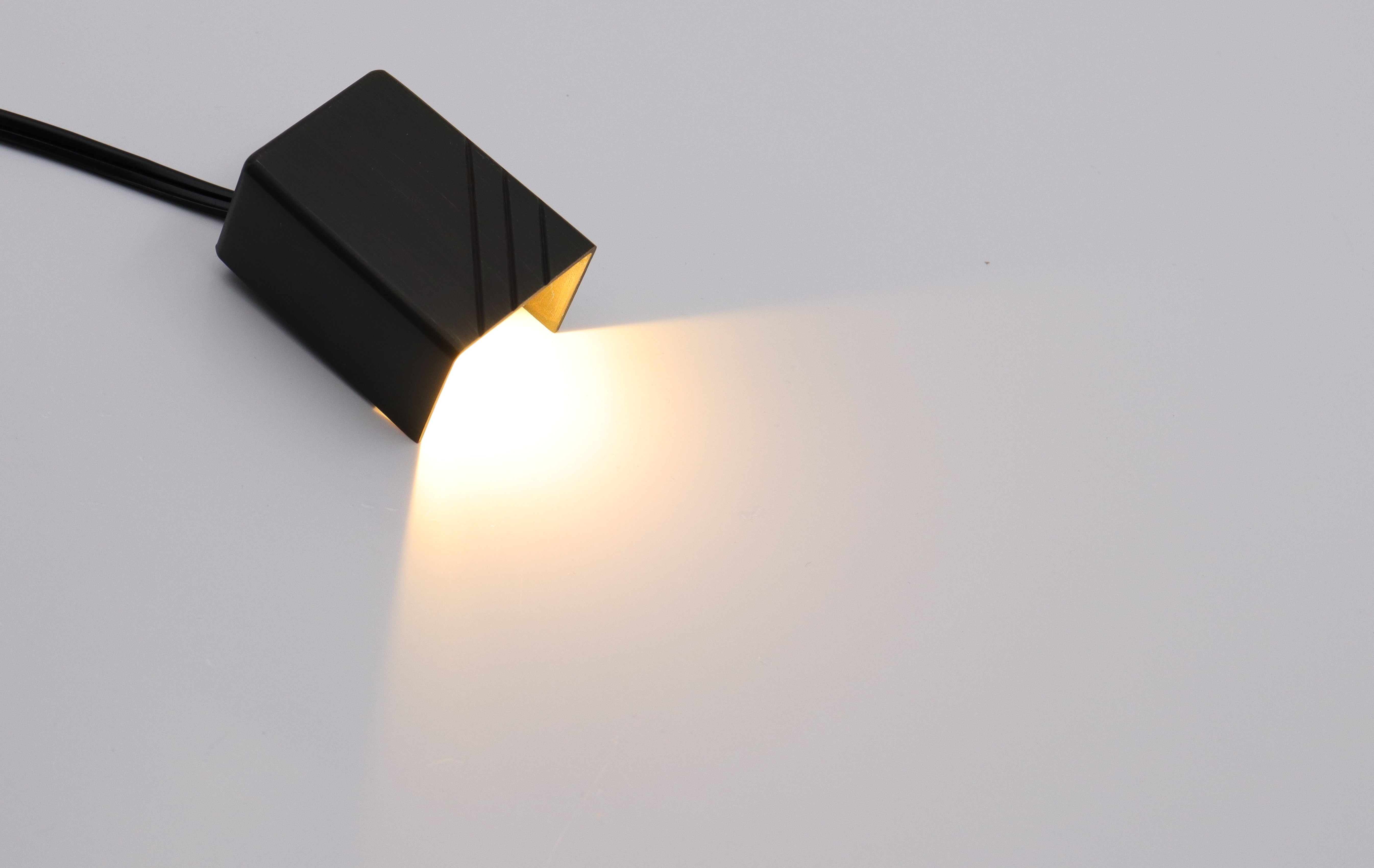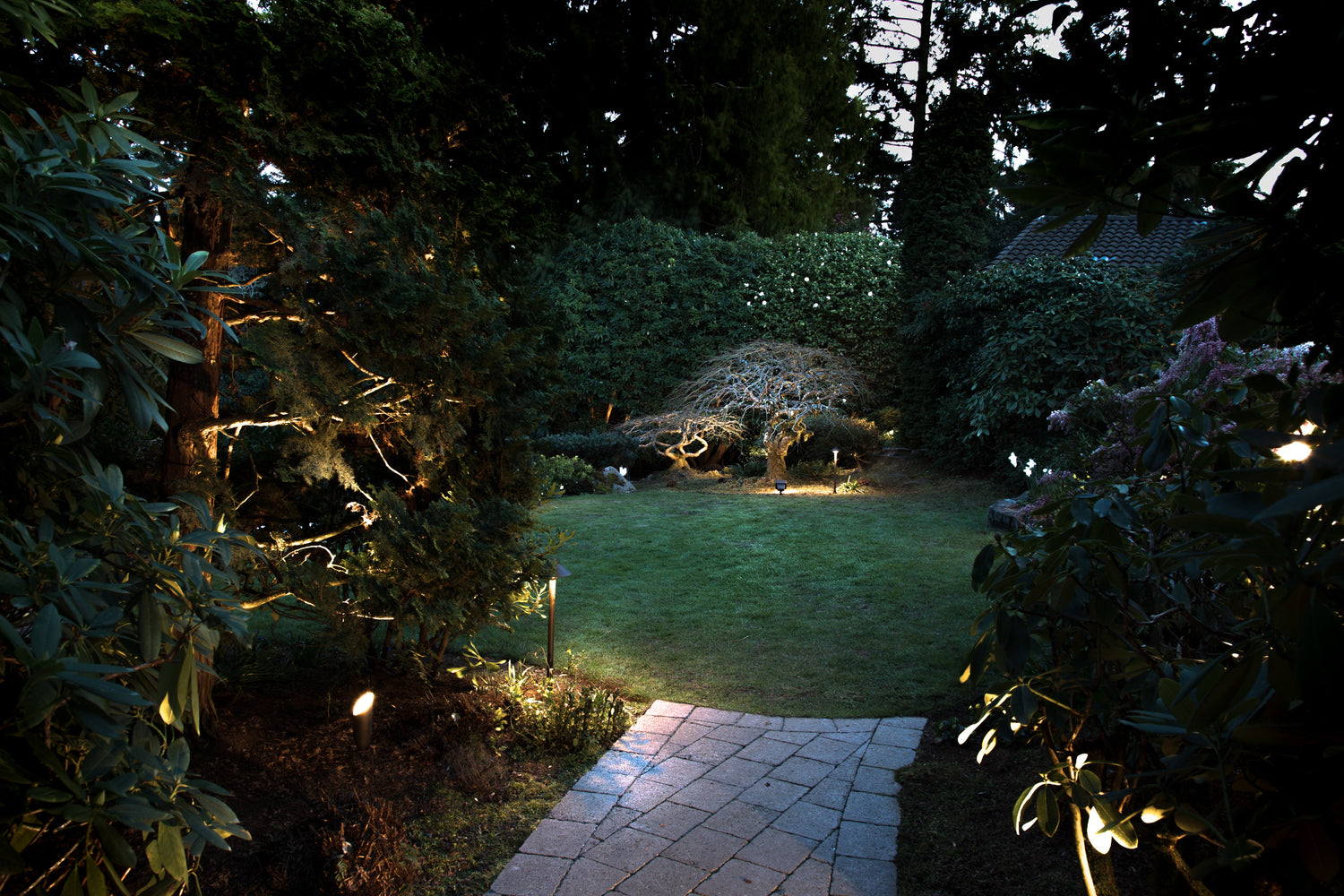As twilight descends, a garden can transform into a landscape bathed in light, all thanks to the understated power of in-ground lights. These subtle fixtures are key elements for enhancing safety and adding a touch of sophistication to outdoor spaces. In this article, we will explore what in-ground lights are, their function in landscape design, and how they stand apart from other outdoor lighting options.
We'll navigate through the technology that powers them, like LED and halogen, and discuss their design benefits. You'll also learn how to plan your lighting setup, choose the right fixtures, and tackle installation with an eye on local regulations. Additionally, we'll cover maintenance tips to ensure longevity and examine eco-friendly choices for the environmentally conscious homeowner. Get ready to illuminate your outdoor area with elegance and efficiency.

1. The Basics of Buried Brilliance: Understanding In-Ground Lights
What Are In-Ground Lights?
In-ground lights are a type of fixture designed to be installed below ground level, with their illumination directed upwards to create a subtle yet impactful lighting effect. These fixtures are often used to accentuate landscape features, provide pathway guidance, and enhance safety by illuminating potential trip hazards.
Unlike their above-ground counterparts, in-ground lights blend seamlessly with the environment during the day and emerge at night as guiding stars on your property. They are the ninjas of the outdoor lighting world—unseen until they spring into action at sundown.
Tech Talk: In-Ground Light Innovations
The heart of in-ground lighting technology lies in its ability to withstand the elements while providing efficient illumination. Modern options like LEDs offer long-lasting brightness and energy efficiency. Halogen lamps, while more traditional, still find use due to their warm light output. Crucial in their design is water resistance, with many models boasting an IP65 rating or higher, ensuring they remain unfazed by rain or sprinkler systems.
Design Aesthetics Simplified
When it comes to design, less is often more. In-ground lights should complement your space without competing for attention. Their aesthetic appeal lies in the ambiance they create, not just in the fixtures themselves. By strategically placing these lights, you can highlight textures and shapes in your landscape, turning ordinary plants and pathways into dramatic features of your outdoor décor.
2. Planning Your In-Ground Lighting Strategy
Assessing Your Outdoor Space
To really make your outdoor space shine, you need to become familiar with every corner of it. Stroll around and see where shadows fall as the sun moves across the sky. Notice how existing lighting affects your space and where darkness seems to gather. Think about the mood you want to evoke. Do you want a softly lit ambiance that invites quiet evenings or bright, clear lighting for hosting gatherings? Pay particular attention to walkways, driveways, and entry points - these are crucial spots where additional lighting can provide both beauty and function. Don't just think about the present layout of your garden; consider your future landscaping plans too. This foresight ensures that your lighting design remains relevant and adaptable.
Fixture Fix: Choosing the Right Lights
Now, let's talk fixtures. The market is awash with options, from sleek, modern designs to more traditional looks that blend into natural settings. If your garden has a minimalist vibe, small recessed lights might be perfect. They're like little stars peeking out from the ground. For those with a flair for the dramatic, spotlights angled at statues or trees create show-stopping effects.
Brightness is measured in lumens, and the right amount depends on what you're illuminating. Soft accents typically require fewer lumens, while path lights benefit from a brighter output. As for beam angles, it's all about direction. Narrow beams spotlight beautifully, whereas wide beams can wash an area with light, ideal for patios or larger sections of your yard. Remember, the goal is to enhance, not overpower, your space. Too much light can be as ineffective as too little.
3. DIY Installation Guide: Getting Your Hands Dirty
Step-by-Step Setup
- Create Your Garden Blueprint: Draw a diagram of your garden or yard, noting key features and areas you want illuminated. Mark the exact points where each in-ground light will be placed.
- Digging the Right Spot: Arm yourself with a spade or a post-hole digger for more precise work. Where you've marked on your diagram, dig holes that are both wide and deep enough to comfortably fit the lighting fixtures but tight enough to keep them stable.
- Wiring with Care: Run the wiring from one light fixture to the next. If your path crosses areas prone to disturbance, encase the wires in a protective conduit. At each marked spot, connect the lights using weatherproof connectors. If these aren't supplied, opt for silicone-filled wire nuts which are great at preventing moisture ingress.
- Test Before You Rest: Once all fixtures are connected, perform a test run with the power on to ensure each light is working as expected.
- Final Placement: After a successful test, turn off the power and carefully place each light into its respective hole. Adjust the fixture to make sure it's level and pointing in the desired direction.
- Bury the Evidence: Backfill the soil around each fixture, packing it down gently to secure the lights in place. Give your lights another test to check for any movement or wiring issues after burial.
It's essential to adhere to local codes and regulations when installing in-ground lighting. While the process may seem straightforward, certain aspects, especially wiring, might require a professional hand.

4. Lasting Glow: Keeping Your Lights Shining
Maintenance Must-Dos
Regular maintenance is vital to keep your in-ground lights performing at their best. Simple actions like clearing debris and wiping the lenses can prevent overheating and reduce wear and tear. It's also wise to check for water ingress, especially after heavy rainfall, to keep your lights shining bright.
Avoiding Common Pitfalls
One common mistake is neglecting the wiring and connections, which can lead to failures. Ensure that all electrical components are properly sealed against moisture. Another pitfall is overloading your lighting circuit which not only risks tripping your breakers but can also shorten the life of your lights.
Eco-Friendly Enlightenment
Finally, consider the environment in your lighting choices. Low-voltage LED lights consume less energy and have a smaller carbon footprint. Solar-powered models soak up the sun by day to light up your nights, offering sustainability and savings on your energy bill over time.
By thoughtfully integrating in-ground lights into your outdoor spaces, you can achieve a harmonious balance between practicality and aesthetics. This guide will set you on the path to creating a nighttime oasis that is both enchanting and eco-conscious.
Final Thoughts
Mastering the art of in-ground lighting is all about balancing functionality with aesthetic appeal. By understanding the basics, choosing the right technology, and strategically planning your installation, you can elevate your outdoor space to a sanctuary of light. Regular maintenance and a nod towards sustainability with eco-friendly options will ensure that your garden not only glows with elegance but also walks hand in hand with environmental responsibility. Whether you're lighting a path to your front door or casting a warm glow on a favorite backyard feature, in-ground lights are the unsung heroes that bring your nocturnal landscape to life.
Here is the art of building buried lights.






Leave a comment
All comments are moderated before being published.
This site is protected by hCaptcha and the hCaptcha Privacy Policy and Terms of Service apply.